This article relies largely or entirely on a single source .(November 2012) |
Tommaso Turco (died 1649) was the Master of the Order of Preachers from 1644 to 1649.
This article relies largely or entirely on a single source .(November 2012) |
Tommaso Turco (died 1649) was the Master of the Order of Preachers from 1644 to 1649.
He was born in Cremona and taught metaphysics at the University of Padua. [1] Tommaso Turco was elected master at the 1644 Chapter of the Dominican Order, over the opposition of Pope Urban VIII, whose preferred candidate was Michel Mazarin, brother of Cardinal Mazarin. [2]
As master, Turco conducted extensive visitations of Italy, Spain, the Kingdom of France, and the Spanish Netherlands. [2]
He died in 1649. [2]

Pope Innocent X, born Giovanni Battista Pamphilj, was head of the Catholic Church and ruler of the Papal States from 15 September 1644 to his death in January 1655.

Thomas Francis of Savoy, 1st Prince of Carignano was an Italian military commander and the founder of the Carignano branch of the House of Savoy, which reigned as kings of Piedmont-Sardinia from 1831 to 1861, and as kings of Italy from 1861 until the dynasty's deposition in 1946.
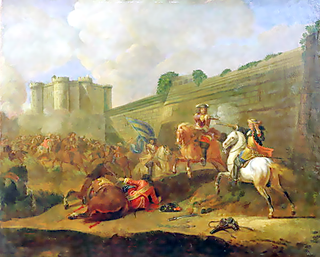
The Fronde was a series of civil wars in the Kingdom of France between 1648 and 1653, occurring in the midst of the Franco-Spanish War, which had begun in 1635. King Louis XIV confronted the combined opposition of the princes, the nobility, the law courts (parlements), as well as most of the French people, and managed to subdue them all. The dispute started when the government of France issued seven fiscal edicts, six of which were to increase taxation. The parlements resisted and questioned the constitutionality of the King's actions and sought to check his powers.

Cardinal Jules Mazarin, born Giulio Raimondo Mazzarino, or Mazarini, was an Italian cardinal, diplomat and politician who served as the chief minister to the Kings of France Louis XIII and Louis XIV from 1642 to his death. In 1654, he acquired the title Duke of Mayenne and in 1659 that of 1st Duke of Rethel and Nevers.

Jean François Sarrazin, or Sarasin, was a French writer.

Charles Amadeus of Savoy, Duke of Nemours was a French military leader and magnate. He was the father of the penultimate Duchess of Savoy and of a Queen of Portugal.

The Dominican Order has been present in Ireland since 1224 when the first foundation was established in Dublin, a monastic settlement north of the River Liffey, where the Four Courts is located today. This was quickly followed by Drogheda, Kilkenny (1225), Waterford (1226), Limerick (1227) and Cork (city) (1229). The order was reestablished in the 19th century after having been driven out in the 17th century by laws against Catholic religious orders. During the Penal Laws, as other Irish Colleges were established on the continent, in 1633 the Irish Dominicans established, the College of Corpo Santo, Lisbon and College of the Holy Cross, Louvain (1624-1797) to train clergy for ministering in Ireland. San Clemente al Laterano in Rome, was entrusted to the Irish Dominicans in 1677. In 1855, St. Mary's Priory, Tallaght, was established to train members of the order, who would complete their clerical studies in Rome and be ordained in the Basilica San Clemente.
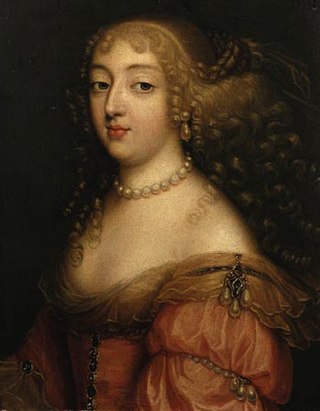
Laura Mancini was a niece of Cardinal Mazarin. She was the eldest of the five famous Mancini sisters, who along with two of their female Martinozzi cousins, were known at the court of Louis XIV of France as the Mazarinettes. She married Louis de Bourbon, Duke of Vendôme, grandson of King Henry IV and was the mother of the great general the Duke of Vendôme.
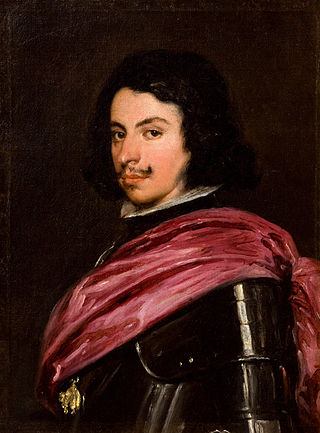
Francesco I d'Este was Duke of Modena and Reggio from 1629 until his death. The eldest son of Alfonso III d'Este, he became reigning duke after his father's abdication.
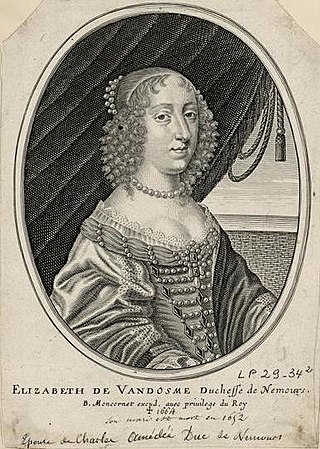
Élisabeth de Bourbon was a granddaughter of King Henry IV of France.
Girolama or Geronima Mazarini was the sister of Cardinal Mazarin, the chief minister of France at the start of the reign of King Louis XIV of France. She was the mother of the five famous Mancini sisters, who with two of their female Martinozzi cousins, became famous at the French court as the Mazarinettes.
Tommaso is an Italian given name. It has also been used as a surname. Notable people with the name include:
Gil de Albornoz y Espinosa, called Egidio Carillo Albornozio in Italian sources, was a Spanish Catholic Cardinal who led the Spanish delegation at the papal conclave of 1644.
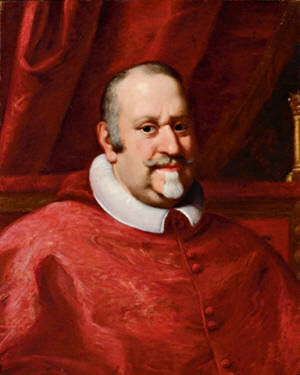
Girolamo Colonna was an Italian Cardinal of the Roman Catholic Church and member of the noble Colonna family.

The 1644 papal conclave was called upon the death of Pope Urban VIII. It lasted from 9 August to 15 September 1644; the cardinal electors chose Cardinal Giovanni Battista Pamphili, who took office as Pope Innocent X.
Michele Mazzarino, or Mazzarini, also known as Michel Mazarin, was an Italian Cardinal and statesman in the service of France.

Pedro Urbina Montoya, O.F.M. or Pedro de Urbina y Montoya was a Roman Catholic prelate who served as Archbishop of Seville (1658–1663), Archbishop of Valencia (1648–1658), and Bishop of Coria (1644–1648).
Franciscus Deurweerders was a Dominican spiritual writer in the Spanish Netherlands, and the founder of the Confraternity of the Cord of Saint Thomas.
Vincenzo Candido (1573–1654), baptised Mario, was a vicar general of the Dominican Order.
Turco is an Italian surname. Notable people with the surname include: